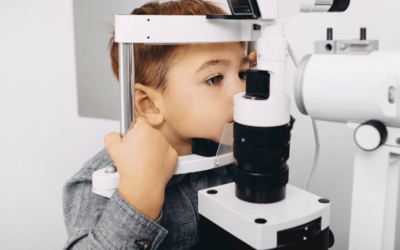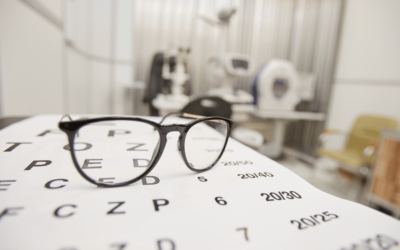Did you know that November is Diabetic Eye Disease Awareness Month? Diabetic eye disease refers to a group of eye problems that people with diabetes may experience because of high blood sugar levels damaging the blood vessels in the retina. Diabetic retinopathy is the most common form of diabetic eye disease and is a leading cause of blindness in American adults.
Types of Diabetic Eye Disease
There are four types of diabetic eye disease:
- Diabetic retinopathy
- Cataracts
- Glaucoma
- Diabetic macular edema (DME)
Diabetic Retinopathy
Diabetic retinopathy is when damage to the retina occurs due to changes in the blood vessels. The retina is the light-sensitive tissue at the back of your eye, and it is responsible for sending images to your brain. In the early stages, diabetic retinopathy usually has no symptoms, so it is important to get regular comprehensive eye exams. If left untreated, diabetic retinopathy can eventually lead to blindness.
Cataracts
A cataract is when the lens of your eye becomes cloudy or opaque, making it difficult to see. People with diabetes are more likely to develop cataracts at a younger age than those without diabetes. Symptoms of cataracts include blurry vision, double vision, poor night vision, and seeing halos around lights. Cataracts can usually be treated with surgery.
Glaucoma
Glaucoma is typically caused by high eye pressure that can damage the optic nerve, resulting in vision loss. Not everyone with high eye pressure will get glaucoma, and some people develop glaucoma with normal eye pressure. Open-angle glaucoma, the most common type, usually develops slowly and has no early warning signs or symptoms. The only way to detect glaucoma in the early stages is through regular comprehensive eye exams.
Diabetic Macular Edema
Diabetic macular edema (DME) is when fluid leaks from damaged blood vessels into the macula—the part of your retina responsible for central vision—causing it to swell and affecting your ability to see clearly. DME can cause blurred vision and blind spots in your field of vision. DME is treated with laser surgery, eye injections, or a combination of both. If you have DME, you will need regular monitoring by an eye doctor because DME can lead to permanent vision loss if not treated early enough.
Conclusion
In summary, if you have diabetes, comprehensive eye exams are essential for detecting diabetic eye disease before it causes permanent damage to your eyesight. So, remember to get those dilated eye exams! If you have any questions about diabetic eye disease or are ready to schedule your diabetic eye exam in Tinley Park, contact our office today!



